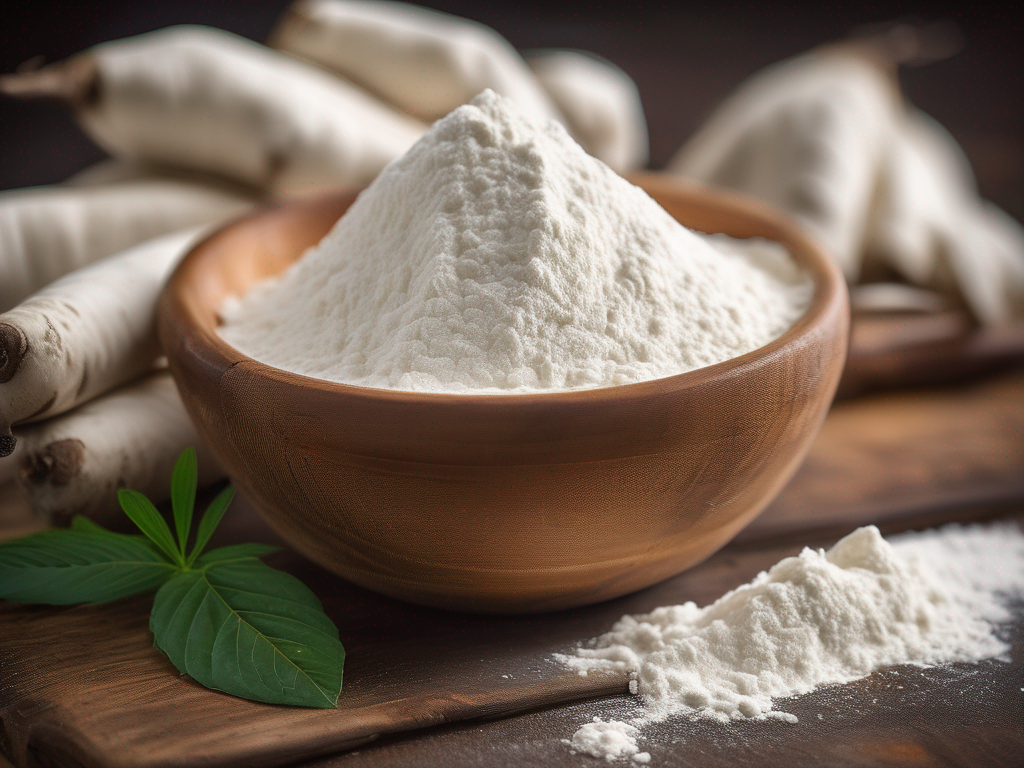
The Best Way to Store Cassava Flour to Prevent Spoilage
Get Your Free Food Safety Cheat Sheet
30 most common foods with instant answers. Print it and stick it on your fridge—completely free!
The Best Way to Store Cassava Flour to Prevent Spoilage
Cassava flour is a versatile and gluten-free alternative to traditional wheat flour, favored for its nutty flavor and unique texture. Proper storage is essential to maintain the quality and freshness of cassava flour, as it is prone to spoilage if not stored correctly. In this blog post, we will explore the best practices for storing cassava flour to prevent spoilage and ensure its longevity. (Cassava flour)
Understanding Cassava Flour
Before delving into storage methods, it's essential to understand what cassava flour is and its characteristics. Cassava flour is derived from the cassava root, also known as yuca or manioc. It is a starchy root vegetable widely used in various cuisines around the world. Cassava flour is naturally gluten-free, making it an excellent choice for individuals with gluten sensitivities or celiac disease.
Cassava flour is known for its high starch content, which gives baked goods a light and fluffy texture. It is also rich in nutrients like fiber, vitamins, and minerals, making it a healthy alternative to traditional wheat flour.
Factors Affecting Cassava Flour Storage
Several factors can impact the shelf life and quality of cassava flour. Understanding these factors is crucial for determining the best storage practices:
- Moisture: Cassava flour is highly susceptible to moisture absorption, which can lead to clumping and spoilage.
- Light: Exposure to light can cause cassava flour to deteriorate and lose its nutritional value.
- Temperature: Storing cassava flour at high temperatures can accelerate spoilage and rancidity.
- Air: Oxidation can affect the quality of cassava flour over time, leading to off-flavors and odors.
Best Practices for Storing Cassava Flour
To preserve the freshness and quality of cassava flour, follow these best practices for storage:
1. Choose the Right Container
Selecting the appropriate container is crucial for protecting cassava flour from moisture and air exposure. Consider these tips:
- Use an airtight container with a secure lid to seal out moisture and air.
- Opt for a container made of food-grade plastic, glass, or metal for durability.
- Ensure the container is clean and dry before transferring the cassava flour.
2. Store in a Cool, Dark Place
Proper storage conditions play a significant role in extending the shelf life of cassava flour. Follow these guidelines:
- Store cassava flour in a cool, dark place away from direct sunlight and heat sources.
- Avoid placing the container near appliances that generate heat, such as the oven or stove.
- Maintain a consistent temperature to prevent fluctuations that can affect the flour's quality.
3. Monitor Moisture Levels
Managing moisture levels is essential for preventing clumping and spoilage of cassava flour. Consider the following tips:
- Store cassava flour in a dry environment with low humidity levels.
- Place a moisture-absorbing packet or silica gel in the container to absorb excess moisture.
- Check the flour periodically for any signs of moisture or clumping.
4. Label and Date the Container
Proper labeling and dating of the cassava flour container can help you track its freshness and usage. Follow these recommendations:
- Label the container with the contents and date of storage to ensure freshness.
- Rotate older stock to the front when adding new cassava flour to maintain freshness.
- Keep a record of the storage date and usage to track the flour's shelf life.
Conclusion
In conclusion, proper storage is essential for preserving the quality and freshness of cassava flour. By following the best practices outlined in this blog post, you can prevent spoilage and ensure that your cassava flour remains flavorful and nutrient-rich. Remember to choose the right container, store in a cool, dark place, monitor moisture levels, and label the container for optimal storage conditions. By taking these steps, you can enjoy the benefits of cassava flour in your cooking and baking endeavors.
For more information on cassava flour and other food storage tips, visit [cassava flour](/food/cassava flour). (Cassava flour)
Authoritative Food Safety References
These agencies and university labs inform every tip and health precaution we publish.
USDA FoodKeeper – Cold Storage Guidelines
Official refrigerator, freezer, and pantry timelines maintained by the U.S. Department of Agriculture.
Visit USDA FoodKeeperFDA Produce Safety Rule & Grower Guidance
Field-to-fridge handling practices that prevent contamination of fruits, vegetables, and leafy greens.
Visit FDA Produce SafetyCDC Foodborne Illness Prevention Hub
Surveillance-backed guidance on pathogens, symptoms, and steps to reduce foodborne illness risk.
Visit CDC Food SafetyUC Davis Postharvest Technology Center
University research detailing optimal storage atmospheres for produce after harvest.
Visit UC Davis PostharvestPenn State Extension – Home Food Preservation & Safety
Peer-reviewed extension bulletins on safe canning, chilling, and reheating practices.
Visit Penn State ExtensionGet Your Free Food Safety Cheat Sheet
30 most common foods with instant answers. Print it and stick it on your fridge—completely free! Want more? Upgrade to the complete guide with 70+ foods.
Scan your food directly and get instant safety info using our AI-powered camera feature.